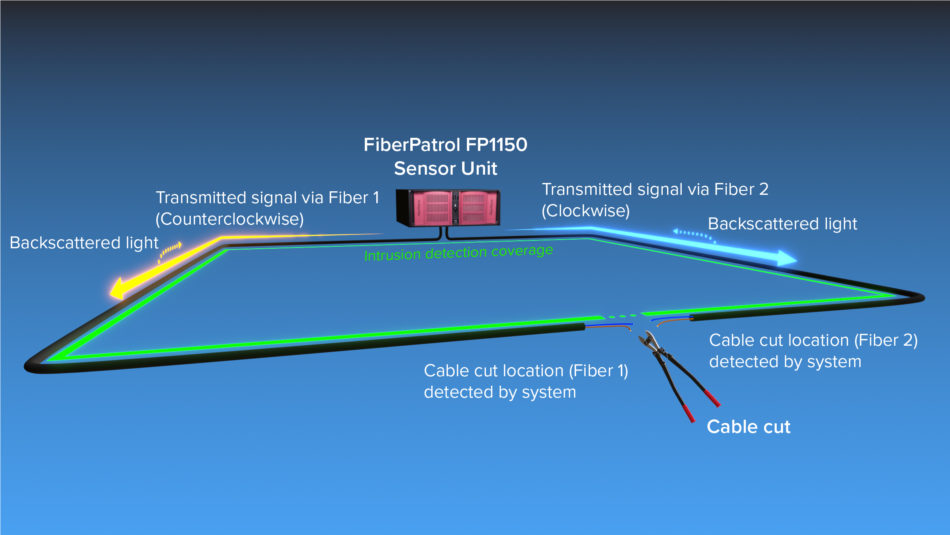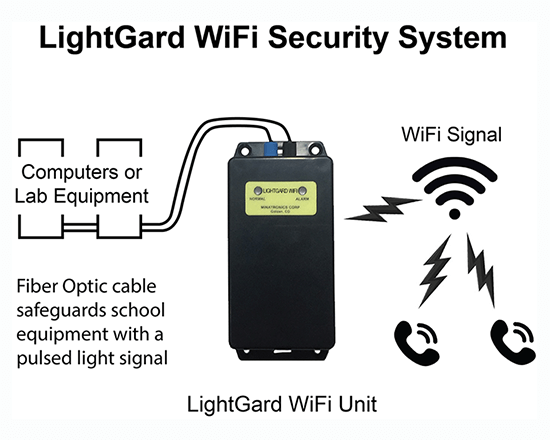How to Decide on a Fiber Optic Security System for Maximum Security and Speed
How to Decide on a Fiber Optic Security System for Maximum Security and Speed
Blog Article
Boost Your Safety With Advanced Fiber Optic Security Solutions
In an era where protection is paramount, advanced fiber optic safety and security systems provide a compelling service for boosting safety and security throughout numerous settings. These systems not only flaunt superior bandwidth and speed for high-resolution surveillance yet also use amazing resilience against exterior interferences. As companies progressively seek reputable means to protect their properties, the combination of innovative modern technologies like AI and IoT within fiber optic structures elevates necessary inquiries about their efficiency compared to traditional systems. What implications do these advancements hold for future safety and security measures?
Advantages of Fiber Optic Safety
Taking advantage of the benefits of fiber optic technology significantly improves safety systems across numerous applications. Among the primary benefits is the enhanced data transfer capability, enabling the transmission of huge quantities of data at broadband. This is particularly important for real-time video clip monitoring, where high-resolution feeds can be sent out without latency, making certain instant action capabilities.
Additionally, optical fiber exhibit remarkable resistance to electromagnetic interference, which is essential in environments with possible signal interruptions. This dependability ensures consistent performance in critical safety procedures. Furthermore, fiber optic cables are less vulnerable to tapping and unauthorized accessibility compared to traditional copper wiring, therefore improving information honesty and confidentiality.
Another noteworthy benefit is the longevity of fiber optic systems; they are more immune to environmental factors such as wetness, temperature level changes, and corrosive substances. This resilience translates to decrease maintenance prices and longer life expectancies for security setups.
Last but not least, the light-weight nature of fiber optic cables promotes easier setup and transmitting, specifically in intricate infrastructures (fiber optic security system). Inevitably, the integration of fiber optic modern technology into safety and security systems not just reinforces security measures however likewise enhances functional efficiency
Trick Functions to Think About
When assessing fiber optic safety systems, several key attributes need to be considered to ensure optimum efficiency and performance. First, analyze the system's detection range and sensitivity; an extensive range permits monitoring huge areas, while high level of sensitivity guarantees that also minor disturbances are discovered quickly.
Next, consider the integration abilities of the system. A fiber optic security system must seamlessly user interface with existing safety and security procedures such as cameras and alarms, creating a cohesive protection network.
Longevity and environmental resistance are also vital functions. Ensure that the system is made to stand up to harsh weather and prospective physical dangers, as this will certainly lengthen its operational lifespan.

Finally, consider the scalability of the system. A durable fiber optic security system must be conveniently expandable to suit future demands without substantial overhauls. By thoroughly taking into consideration these attributes, you can pick a fiber optic security remedy that improves safety and security and protection in your atmosphere.
Installment Refine Review
To successfully apply a fiber optic safety and security system, an organized installment procedure is necessary. This procedure begins with an extensive website analysis to figure out the certain safety demands and to recognize ideal locations for fiber optic wires and safety and security devices. Following this evaluation, the installment group will certainly create a comprehensive strategy, consisting of cable pathways, necessary tools, and conformity with local laws.
Next, the installment includes laying the fiber optic cables, ensuring they are safeguarded from ecological aspects and physical damages. Appropriate handling methods are essential, as fiber optic cables are delicate and can be easily damaged. After the cabling is set up, adapters and terminations are meticulously completed her response to make certain signal stability.
The succeeding stage is composed of setting up safety and security tools such as cameras, activity detectors, and alarm systems, all incorporated with the fiber optic network. Rigorous screening is conducted to verify that all parts are operating properly and to ensure optimal performance.

Contrasting Fiber Optic to Traditional Solutions
The advancement of safety innovation has led to considerable innovations in the comparison in between fiber optic systems and conventional copper-based systems. Fiber optic systems make use of light to send information, supplying superior data transfer and speed contrasted to their copper counterparts. This results in improved data transmission capabilities, making optical fiber excellent for high-resolution video clip security and real-time surveillance.
Furthermore, fiber optic wires are resistant to electromagnetic disturbance, reducing the likelihood of signal destruction brought on by external aspects. This characteristic ensures constant efficiency, even in difficult atmospheres. On the other hand, conventional copper systems are a lot more at risk to interference, bring about potential susceptabilities in protection applications.
Resilience is one more advantage of fiber optic systems. They are much less vulnerable to harm from environmental aspects such as dampness and temperature variations, which can endanger copper circuitry. Fiber optics are lighter and Learn More thinner, permitting for less complicated installation and minimized physical footprint.
Nonetheless, traditional systems often tend to have lower initial costs, making them attractive for budget-conscious projects. While fiber optic systems may need a greater ahead of time investment, their lasting benefits-- such as reduced maintenance costs and higher integrity-- typically outweigh the first cost, placing them as a premium choice for modern-day security needs.
Future Patterns in Safety And Security Technology
Emerging trends in safety modern technology are poised to change the landscape of surveillance and hazard discovery - fiber optic security system. As companies significantly encounter advanced threats, innovations such as expert system (AI) and artificial intelligence (ML) are coming to be essential to protection systems. These innovations boost the capability of fiber optic systems by allowing real-time data evaluation, identifying anomalies, and automating reactions to potential violations
Furthermore, the assimilation of the Web of Things (IoT) is reinventing safety frameworks. IoT tools can offer comprehensive situational understanding and help with seamless communication in between different safety and security parts. This interconnectedness allows for more reliable surveillance and faster occurrence reaction times.
Biometric verification is additionally acquiring momentum, giving a greater degree of safety and security through distinct physical features. As this technology evolves, it is most likely to be included into fiber optic systems for improved access control.
Verdict
In conclusion, progressed fiber optic safety and security systems represent a considerable innovation in security and surveillance technology. The useful reference shift from traditional systems to fiber optic options mirrors a growing pattern in the direction of more effective and effective security measures in a progressively complex technical landscape.
Report this page